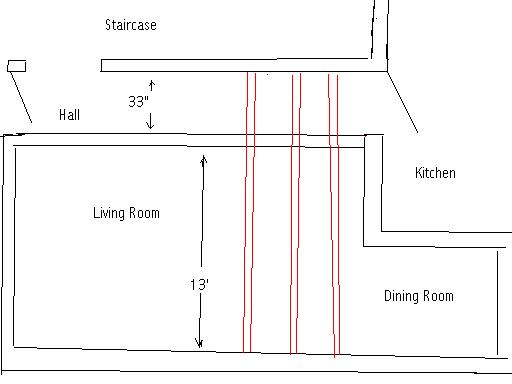Hi all.
I want to remove part of a block wall which doesn't extend upstairs, but it does have the upstairs floor joists resting on it. The joists are at 90degrees to the wall.
The sketch below shows (hopefully) what I want to do, the gap in the living room wall is what I will knock down & where I will have to place a lintel.
My problem is I have plenty of end bearing for the lintel on the left side, but only 100mm on the right side. The right side is a concrete block wall which the lintel be coming 90degrees off.
Would the 100mm be acceptable to the bco or will I have to leave a bit extra wall, ( I've shown in red on the sketch) which will not look too good.
Thanks.
![GALLERY]](http://[GALLERY=media, 3533][/GALLERY])
I want to remove part of a block wall which doesn't extend upstairs, but it does have the upstairs floor joists resting on it. The joists are at 90degrees to the wall.
The sketch below shows (hopefully) what I want to do, the gap in the living room wall is what I will knock down & where I will have to place a lintel.
My problem is I have plenty of end bearing for the lintel on the left side, but only 100mm on the right side. The right side is a concrete block wall which the lintel be coming 90degrees off.
Would the 100mm be acceptable to the bco or will I have to leave a bit extra wall, ( I've shown in red on the sketch) which will not look too good.
Thanks.


